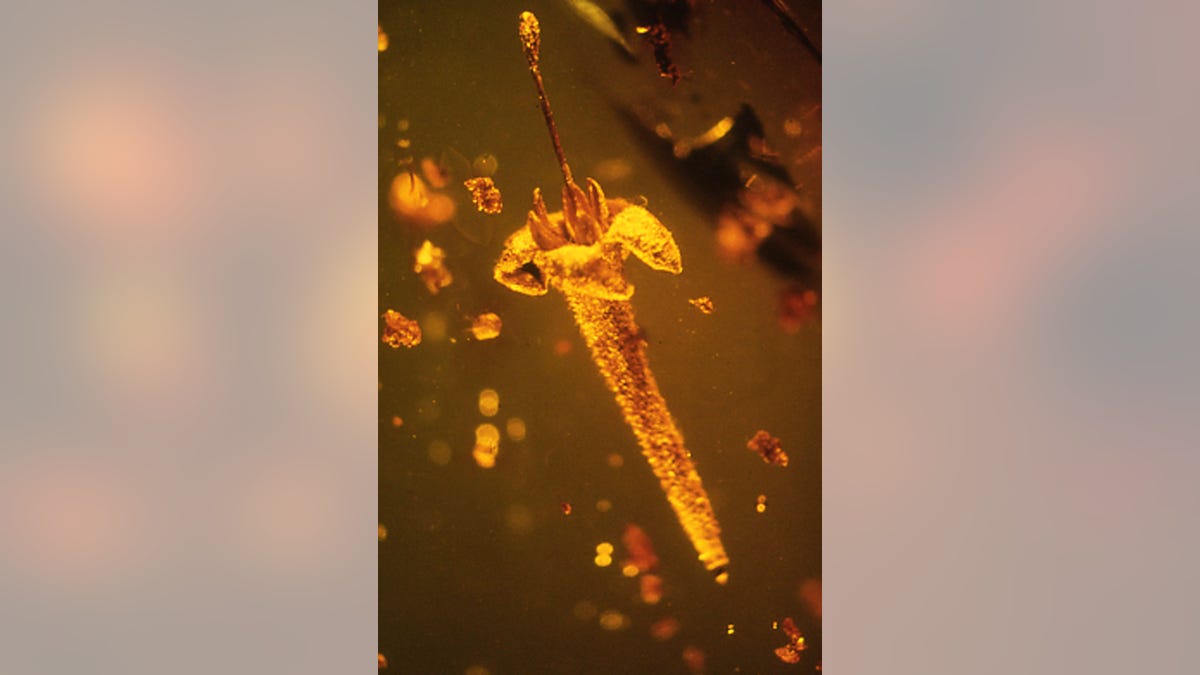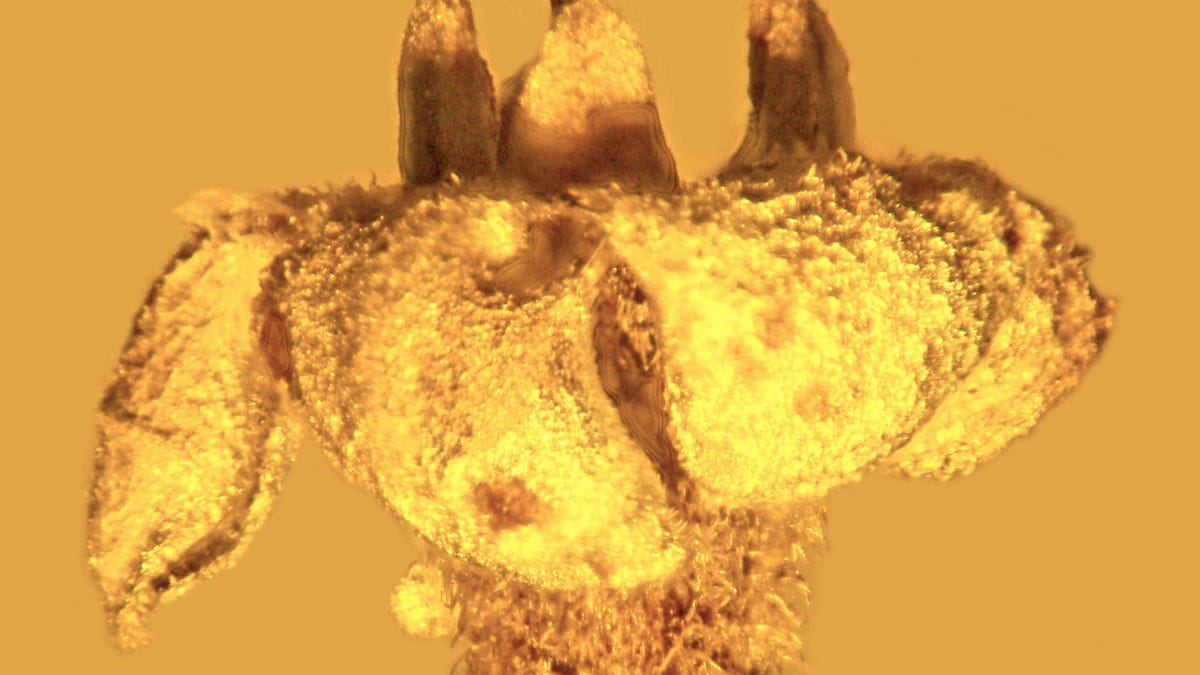
The new fossil flower Strychnos electri in its original Dominican amber piece of mid-Tertiary age. The whole flower is less than 20 mm long and is the first finding of an asterid flower in amber from the New World. (George Poinar)
Scientists have discovered the fossilized remains of a flower entombed in Dominican amber, the first-ever specimen of a plant family that has given the world some of the deadliest poisons, including strychnine.
The perfectly-preserved flowers named Strychnos electri are estimated by researchers from Oregon State and Rutgers universities to be from 20 million to 30 million years old.
It comes from the family of flowering plants called asteroid that gave us potatoes, tomatoes, tobacco, petunias and our morning cup of coffee. But this one is from the genus Strychnos, which ultimate produce strychnine and curare – poisons used in everything from rat control to blow-gun weapons. Strychnine also played a part in the movie “Psycho,” in which Norman Bates uses rat poison to kill his mother and her boyfriend.
Related: Roots of ancient flowers reach back to dinosaur times
"The specimens are beautiful, perfectly preserved fossil flowers, which at one point in time were borne by plants that lived in a steamy tropical forest with both large and small trees, climbing vines, palms, grasses and other vegetation," Oregon State’s George Poinar, Jr. one of the world's experts on plant and animal life forms preserved in amber and a co-author of the discovery in the journal Nature Plants, said in a statement.
"Specimens such as this are what give us insights into the ecology of ecosystems in the distant past," he said. "It shows that the asterids, which later gave humans all types of foods and other products, were already evolving many millions of years ago."
The discovery of these two fossil flowers, researchers said, suggests that many other related plant families could have evolved in the Late Cretaceous in tropical forests and adds “an important piece to the evolutionary jigsaw puzzle of neotropical forests that existed in the mid-Tertiary, long before North and South America were connected by the Panama land bridge.”
Related: Bee fossils provide rare glimpse into Ice Age environment

Strychnos electri is a newly found fossil flower in amber, and a closeup of the fossil shows the recurved petal lobes and small, tightly attached anthers with pollen in the mouth of the flower. (George Poinar)
Strychnos electri “provides evidence that highly derived asterid groups were present in the mixed neotropical forest by the mid-Tertiary,” Poinar and the other co-author Lena Struwe of Rutgers University, wrote. “This suggests that many other present-day neotropical asterid genera and their families had also evolved by this time but their remains have not yet been discovered.”
Asterids are among Earth's most important and diverse plants, with 10 orders, 98 families, and about 80,000 species. They represent about one-third of all the Earth's diversity of angiosperms, or flowering plants.
And one ancient genus, which has now been shown to be inherently toxic, existed for millions of years before humans appeared on the planet.
Related: Scientists discover prehistoric 'Jurassic butterfly'
"Species of the genus Strychnos are almost all toxic in some way," Poinar said. "Each plant has its own alkaloids with varying effects. Some are more toxic than others, and it may be that they were successful because their poisons offered some defense against herbivores.”
There are now about 200 species of Strychnos plants around the world, in forms ranging from shrubs to trees and woody climbing vines, mostly in the tropics. They are still being studied for medicinal properties, such as for the treatment of parasitic worm infections and for drugs to treat malaria.
